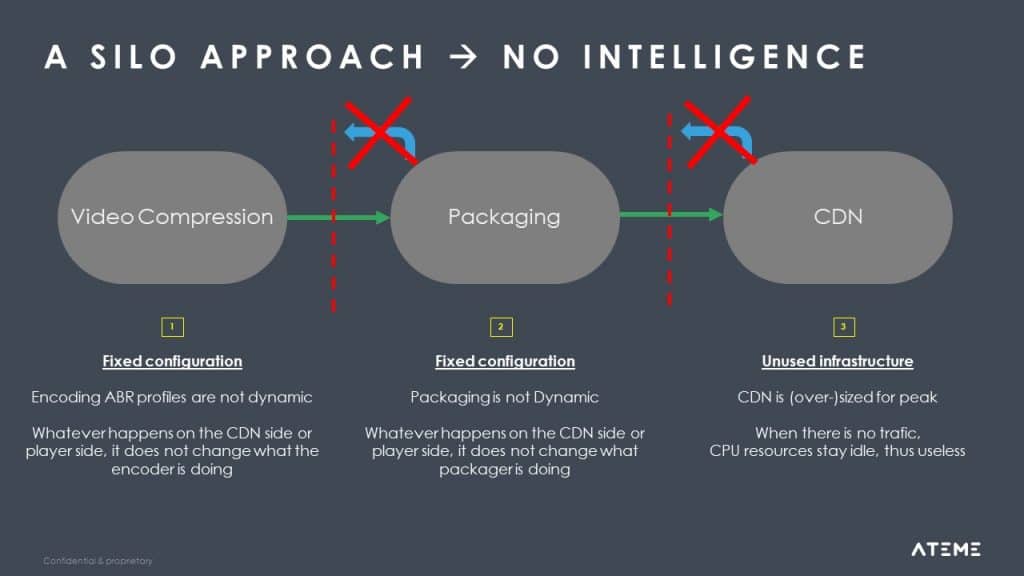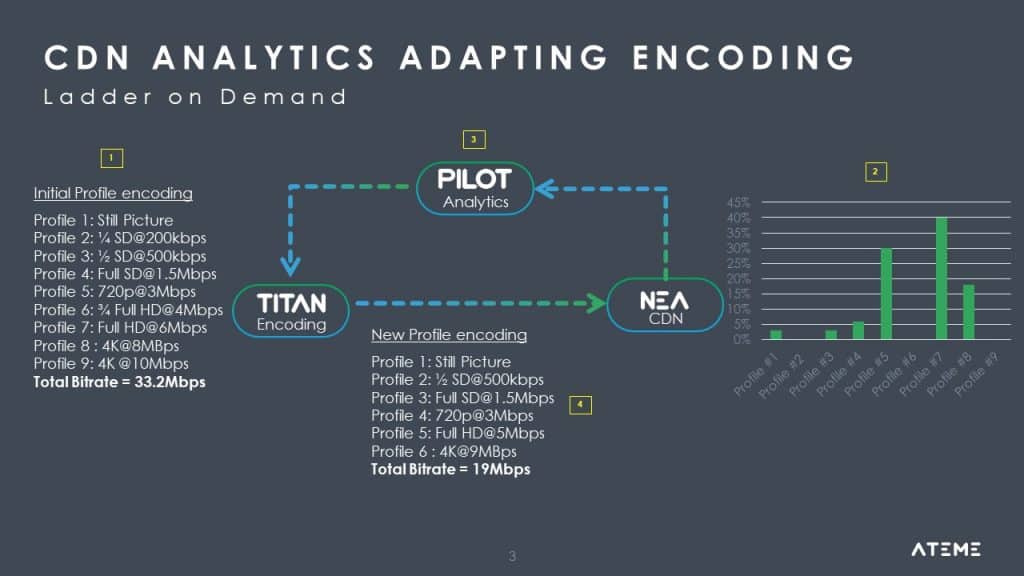France, Spain, Italy, and even parts of the UK have experienced early heat waves this year. France saw the earliest-recorded heatwave (June), and three towns in France broke all-time temperatures in June, with Biarritz, once appreciated for its mild summers, reaching 42.9° C.
This is, of course, just one tiny example of the effects of climate change, which could become much worse. And while we might feel powerless when faced with such a huge problem, the world we’ll live in tomorrow will be a direct consequence of the choices we make today. Individuals can have some impact, but the biggest impact will come from large-scale industrial choices: choices that each one of us in the streaming industry can make to limit the contribution of video streaming to global warming.
The easiest choice, of course, would be to reduce the quality of the service delivered. Less information to process, encode and deliver means less power consumed. All other things being equal, that means less greenhouse gas going into the atmosphere.
But reducing quality is not really a choice when you’re in the highly competitive video-delivery business. In fact, the talk is all about improving quality of experience, which includes such things as 4K and HDR, but also low latency and immediate display – all of which promise to clog up the network even more.
So the real question is: how do you increase Quality of Experience while simultaneously reducing the carbon emission of video streaming? Is that even possible?
It turns out that it is. In fact, video streaming includes a lot of waste. So if instead of a wholesale reduction in energy consumption, you eliminate waste to reduce energy consumption only where you didn’t need it anyway, you can achieve incredible things.
Let’s look at that in more detail: first, from the encoding perspective.
In standard encoding for a streaming service:
- You encode different profiles to have a full ABR ladder;
- These profiles are packaged in a fixed configuration;
- The CDN is sized – or shall we say over-sized – to absorb any peak.

As you don’t know under what conditions people are viewing the video, this flow is largely suboptimal. What happens if one profile is never watched? What happens if service quality is blurry because of network congestion on the long run? Easy answer in both cases: nothing. Everything is set in stone… until the next major operational upgrade.
Now imagine if, instead, you had the information you needed and could know exactly which profiles would be required. Imagine if you could dynamically connect the CDN data with the encoder. That’s what Ateme offers.

Let’s have a deeper look based on an example benchmarked in Ateme’s labs:

- The initial ABR ladder is created by the encoder.
- Based on CDN analytics, profiles 2, 6 and 9 are unused: they should be removed.
- Analytics are looped back from the CDN to the encoder.
- A new ABR ladder is created, where the unused profiles are removed.
We go beyond ”just’’ removal of the unwatched profiles – which already provides significant savings. Indeed, as some profiles are removed, there is no point having two close consecutive profiles. So the bitrates of the other ladders have to be adjusted so the overall bitrate spectrum is balanced. For instance, in the above example, the bitrates of the Full HD and UHD profiles are adjusted to reflect the new stack.
Overall, this dynamic adjustment augments the overall savings. Back to our example, we are now talking about a 43% total bitrate reduction (from 33.2 Mbps, to 19 Mbps).
The benefits for the streaming service are multiple:
- Optimized viewing experience;
- Lower total cost of ownership, based on fewer resources used;
- A greener service.
In part II of this blog series, we’ll look at how our audience-aware CDN also contributes to these same benefits – with the combination of audience-aware encoding and audience-aware CDN resulting in a powerful tool for optimizing resources to reduce energy consumption while increasing Quality of Experience. Stay tuned!

